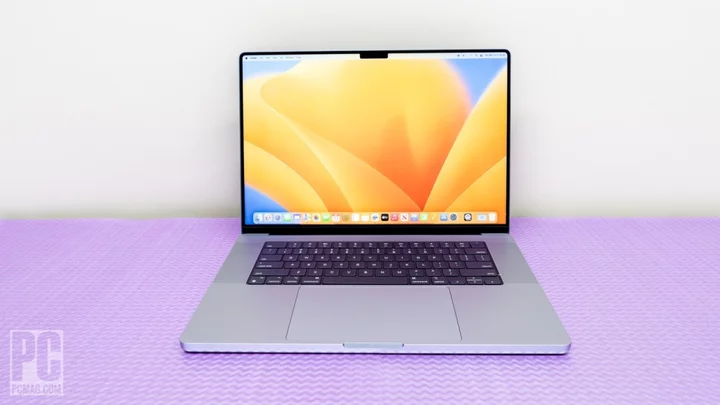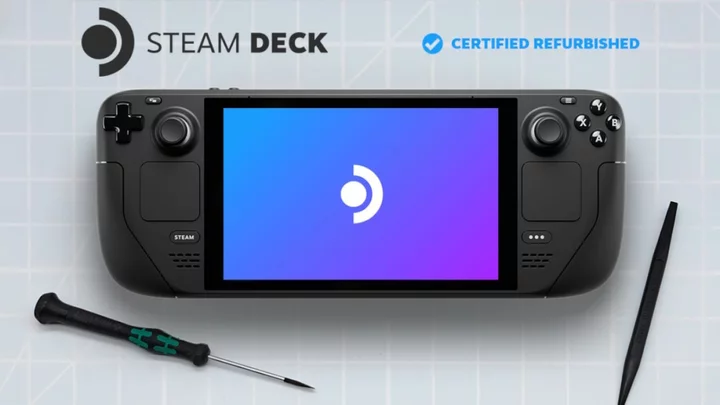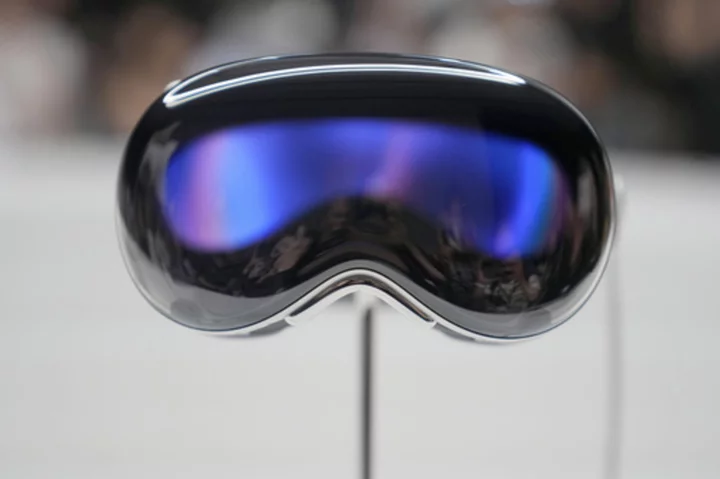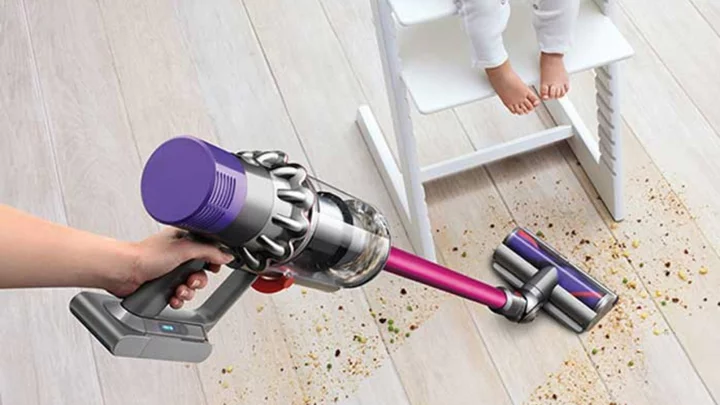Video editing has come out of the edit bays and production shops of Hollywood, and is now available to anyone with the right laptop. Whether you're a film student or an industry professional, or you just want to make something for YouTube, finding the right laptop for video editing can be daunting. Not every laptop is powerful enough to handle edits quickly, or to work with full HD or 4K resolution; storage is a major concern; and then there's price. It's hard to know what's going to give you the best value. We're here to help you find exactly what you need.
We've collected the best video editing laptops from across the many dozens of laptops we've recently reviewed, updated regularly to make sure you see the top current options. And we have expert advice about what sort of processor and graphics you need, why storage is so essential, and what features will make the biggest difference when you cut together your next project. But before we get into our detailed buying advice about components and features, let's look at our top-rated video editing laptops.
When it comes to choosing your ideal video editing laptop, a few features and specifications that you should pay close attention to rise to the top. Display specs are especially important, especially if you plan on using your laptop for more advanced editing tasks such as shading and color correction. A comfortable keyboard is a must, too, since keyboard shortcuts help streamline many editing tasks, from starting and stopping playback to adding keyframes.
(Credit: Joseph Maldonado)Finally, note a few features common on laptops that you don't need to worry about when buying a mobile video-editing station. Chief among them is battery life, since video editing consumes so much power that your laptop will probably spend most of its time plugged in. If editing on the road is a must, you might want a spare power adapter for hotel rooms, and make sure your flight has in-seat power outlets before you buy a ticket. Neither will you get much use out of a touch screen or a convertible laptop that doubles as a tablet, unless you're looking for a machine that you'll also use for web browsing and watching videos after the end of a long day of shooting and editing.
What CPU and Memory to Get in a Video Editing Laptop?
The two most important laptop components for video editors are the CPU and memory. Modern video editing applications are optimized to take advantage of today's multi-core CPUs, which usually means that the more cores you have, the better, all else being equal. Multithreading, which enables each core to handle two processing threads simultaneously, is also important. To find out more about the CPU in the laptop you're eyeing, look it up in Intel's product directory or on AMD's Ryzen CPU product pages. Any chip that you are eyeing for serious video work should have at least six cores and support multithreading for 12 concurrent threads of processing. High-end laptop chips can support up to eight "high-performance" cores and 16 threads, with even more cores available on some of the very latest high-end chips, especially with Intel's addition of plentiful Efficient cores (E-cores) on many of its latest mobile CPUs. (For a broader overview of laptop CPUs, check out our deep-dive guide on understanding the CPUs that go into notebooks.)
For a bird's-eye view of how a higher processor core count increases performance, you'll want to check out how well the laptop you're considering fares on our Cinebench benchmark, which is listed in the performance section of each review. This test uses software from video-effects titan Maxon to spit out a proprietary score based on how quickly the PC can render a 3D image. Although multiple factors can influence the score, in general, the more (and faster) cores the CPU has, and the more addressable threads it supports, the quicker the image renders. The principle is the same for video-editing software such as Apple Final Cut Pro and Adobe Premiere Pro, which are engineered to distribute compute tasks over multiple cores just like Cinebench.
(Credit: Molly Flores)In general, CPUs with the power-laptop-oriented H series from AMD or Intel (look for an "H" at or toward the end of the CPU's model name) will be the best match for video editing. They offer more addressable cores and threads, higher voltages, and sometimes faster clock speeds than alternatives designed for thin-and-light laptops (the U series, which nowadays end in a "U" or on some older chips a "G," with the G followed by a number). AMD and Intel use the same conventions (barring the "G" in AMD's case) on their mobile CPUs.
As for main system memory, a good rule of thumb is that you should select a laptop with 16GB of RAM. For many consumer ultraportables, this is the limit, although you can now order creator-class laptops with 32GB or more. The cost can be prohibitive, however, and we think if budget is tight, the money is better spent on a faster CPU, so we're calling 16GB the sweet spot, with 32GB as a stretch goal.
Should I Get a Hard Drive or an SSD (or Both) in a Video Editing Laptop?
To complete the trifecta of principal specs, you'll want a fast boot drive. Nowadays, this means configuring a laptop with a solid-state drive (SSD), which can access data much faster than older spinning drives. Indeed, no modern video-editing laptop will have anything but an SSD for a boot drive. For everyday computing use, the speed difference between an SSD and a spinning-platter hard drive is vast, since an SSD's main skill is decreasing boot times and making apps load faster. These factors are important for video editing (loading editing applications can take some time, if you tend to edit under pressure), but an SSD will still offer noticeable speed gains on specialized tasks such as playing back multiple clips at once or working with 4K footage.
If you can't afford a single roomy multi-terabyte SSD in your editing rig, ideally you want a capacious hard drive (for mass storage) in addition to a speedy SSD. But since the cost of built-in SSDs skyrockets at capacities above 2TB, it could be more cost effective to make sure your laptop has a Thunderbolt 3 or Thunderbolt 4 connection to enable a link to a fast external drive where you'll store most of your footage. That said, some larger workstation and gaming machines can offer two drives (an SSD boot drive, plus a roomy platter-based hard drive), and if you're in the market for a big machine, this is an ideal video editors' arrangement: both speed and mass storage at your disposal, without external-drive hassles.
(Credit: Kyle Cobian)When it comes to assessing SSDs, most machines relevant for video editing have moved toward SSDs using the PCI Express bus (often associated with the term "NVMe," for a protocol that affords faster data transfers than ever). These are faster than drives that use the older SATA interface, which are less common in midrange and high-end laptops than they used to be. (See our favorite internal SSDs.)
Graphics Acceleration: For Video Editing, Do You Need a Dedicated GPU or Not?
Most non-gaming laptops come with graphics-acceleration silicon that's part of the CPU, not a separate graphics processing chip (GPU). This arrangement offers weak performance if you're playing richly detailed, AAA-grade video games, but it's actually fine for many video-editing scenarios. Nearly all video-editing suites are designed to take advantage of more powerful processors, but the ability to leverage powerful graphics-processing hardware isn't as common.
There are a few exceptions. For example, a discrete GPU can speed up the video-encoding process in Final Cut Pro X, and Blackmagic's Davinci Resolve editing suite has a video-playback engine that's optimized for powerful GPUs. Still, it's best to save GPU-accelerated editing tasks for when you get back to the studio, and a more powerful desktop, if that's possible.
That said, if the laptop you're considering offers an entry-level discrete GPU for a reasonable premium (say, $200 or so), there's little reason not to spring for it and enjoy the added speed boost when you're rendering or exporting video, depending on the software you use. You can get a comparative idea of a laptop's graphics performance by glancing at its relative scores on our 3DMark benchmark tests. Of course, if you're a gamer on the side, you can leverage a GeForce or Radeon dedicated chip for both playtime and editing time.
Connectivity: What Ports Do I Need in a Video Editing Laptop?
If you're already carrying around dozens of pounds of camera and lighting equipment, the last thing you want is to add weight to your bag. Luckily, many very powerful laptops weigh less than 4 pounds these days. The thinnest and lightest won't have discrete GPUs or displays larger than 14 inches, but you may be able to do without these features, especially if you've got a studio with a more powerful editing station where you do most of your cutting.
If you're slimming down, however, try not to lose too many ports. We recommend at least one Thunderbolt port, which lets you connect to external displays via the DisplayPort standard, lightning-fast external drives, and pretty much any USB peripheral, such as external mice or keyboards, with the right cabling or via an adapter. (Thunderbolt 3 or 4 ports are physically and electrically compatible with USB Type-C ports.) Some laptops, including all MacBook Pro models, only include Thunderbolt ports. The sweet spot is one or two Thunderbolt ports, and one or two regular USB 3.0 or USB 3.1 ports.
Dell XPS 17 (9730) with USB-C ports and an SD card slot (Credit: Molly Flores)A full-size SD card slot can also be useful for transferring footage directly from your camera to your laptop, and all laptops should have an audio port for connecting headphones to use while editing on the plane or in a cafe.
Assessing the Display: What's the Best Screen Size for a Video-Editing Laptop?
With most mainstream and better laptops these days offering at least full HD (1,920-by-1,080-pixel) resolution, your main screen consideration should be screen size, not pixel count. A 15-inch, 16-inch, or 17-inch display will let you see more of your project timeline, but it comes at the expense of weight and heft. Meanwhile, a 12-inch display could have you squinting.
The sweet spot, therefore, if you need to travel with your editing machine is 13 or 14 inches. Many laptops manage to squeeze a 13-inch or 14-inch screen into a chassis that otherwise would hold a smaller display by slimming down the bezel, or border, around the screen. But an important note: Most laptops of this screen size will bounce you down to a U-series processor. You'll tend to find the most powerful CPUs in models at the 15-inch and larger sizes. That is because, the bigger the laptop, the more thermal leeway the designer has for including more powerful components.
While full HD resolution is fine for many editing tasks, if you shoot primarily in 4K, you want a screen resolution to match. Combine a 4K (that is, 3,840-by-2,160-pixel) screen, a six- or eight-core processor, and a discrete GPU, though, and you'll likely end up with rather short battery life. So, if you settle on a 4K screen, make sure it's feasible that you'll stick near a power outlet most of the time, and consider buying an external battery charger to use in a pinch.
At the other end of the spectrum, don't choose a resolution below full HD (such as 1,366 by 768 pixels) in any video-editing machine. That said, new laptops with screens less than full HD (1,920 by 1,080 pixels) are uncommon except in the very lowest-cost machines. None of those will be any good for video editing.
(Credit: Molly Flores)If your video-editing tasks mostly involve arranging clips, mixing audio, and the like, you probably don't need to worry about the display's color capabilities. For more artistic or precision-minded jobs, though, such as shading and color correction, you'll want to pay attention to how many colors the screen can display and how it calibrates the color profile. Look for specs like DCI-P3 or Adobe RGB color-gamut support and automatic calibration, features that are often rolled into a single marketing moniker such as HP's DreamColor. OLED screens and those with HDR support offer greater color contrast and could be helpful as well. (See our favorite OLED-screen laptops.)
The Microsoft Surface Laptop Studio with its pull-forward screen (Credit: Molly Flores)As mentioned earlier, you probably don't need to worry about whether or not the laptop has a touch screen. Video editing involves precision and repetition, which are best suited to keyboard shortcuts and a mouse, not touch input. The one exception is the MacBook Pro's Touch Bar, a narrow, secondary touch screen perched forward of the keyboard, between it and the screen. It's designed with apps like Final Cut Pro and the Adobe Creative Suite in mind, and will pop up context-relevant shortcuts with supported software. But you'll only see it in older MacBooks and one current model; Apple has phased it out in recent releases.
Editing Platform Basics: Mac or PC?
Video editors are among the class of creative professionals who stereotypically prefer to use Macs instead of PCs. Whether or not you fit that stereotype, if you're a veteran of the industry, you probably already have a preference, so we're not going to try to change your mind.
If you're OS-agnostic, however, you have a vast array of hardware choices if you decide to choose a PC over a Mac laptop. The biggest advantage of going with Windows or Linux is the possibility of buying a workstation-class laptop with a many-core Intel Xeon processor, something not available on any Mac portable. That said, if you are a proponent of a video editor that works natively with Apple Silicon, such as the latest Mac versions of Adobe Premiere Pro, that itself may be the decider for you to get on the M1 or M2 MacBook train.
Another OS consideration is your specific video-editing software preference. For example, Final Cut Pro works only on Macs, although most other editing suites, from Premiere Pro to Avid Media Composer, are available on multiple platforms. If you're wedded to one program or another, we'd expect that to play into your decision just as much as, if not more than, the OS itself or the hardware available.
How to Adjust Windows Settings for Best Laptop Battery LifeSo, What Is the Best Laptop to Buy for Video Editing?
We've selected a host of our top-rated models for video editing below. Some are earmarked for content creators; some are mobile workstations; and a few are actually thin-and-light models. Any of them should be powerful enough for at least casual editing, and some are muscled-up enough for major editing tasks.
Ultimately, how much you'll have to budget depends on whether you're using your video-editing laptop only for quick work in the field, or whether you plan to bring it back to the studio, plug it in, and use it as your primary machine. If you're going the former route, you'll also want to take a look at our best desktops when it comes time to upgrade your main rig. If you're choosing the latter, you might want to familiarize yourself with our list of best gaming laptops, one of which may offer the power—especially the heftier CPU—you need for marathon editing sessions on deadline night. Color-precise screens tend not to be their forte, but good gaming laptops tend to have many of the same traits you need in a good video editing laptop.









